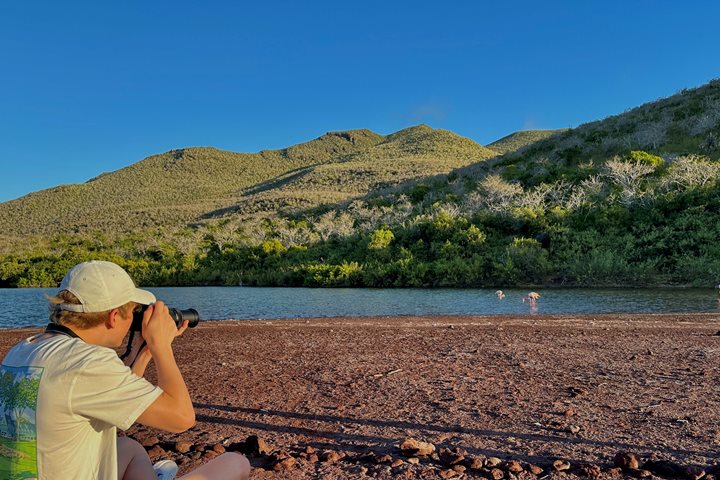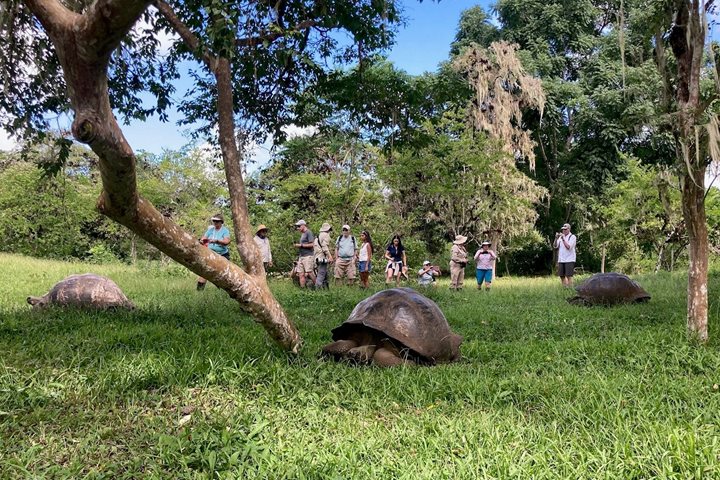Two of the most spectacular islands in the Galapagos are located in the central part of the archipelago. One is home to many seabirds and is, perhaps, a bird lover's paradise. On the other hand, the second one offers spectacular snorkeling sites, beautiful landscapes, and impressive geology that captivates nature lovers.
It was very sunny and windy as we headed towards North Seymour Island. From a distance, we appreciated its uniquely flat topography, which was created by an uplifting of the ocean floor. The uplifting revealed cliffs and remains of corals and shells that inhabited this place millions of years ago when the island was still underwater. We walked along the path covered by deciduous vegetation, mostly palo santo and muyuyu trees. Walking inland, we found the first colony of magnificent frigatebirds perched on top of trees and bushes. With their gular pouches inflated, males tried to find a mate. They produced an unmistakable sound as they beat their wings vertically and swung their heads from side to side. We observed many juvenile frigatebirds and other chicks eagerly waiting for their parents to feed them. On the rocky ground, male blue-footed boobies courted females, dancing and spreading their legs. They opened their wings and pointed their beaks to the sky, whistling and waiting for a mate. This impressive and unique show delighted our guests, so we appreciated these adorable creatures for several minutes. Several meters inside the palo santo forest, we found land iguanas feeding on saltbushes. We returned to National Geographic Islander II and immediately started navigating northwest, bound for the island of Rábida.
After a calm navigation, we dropped anchor and began our activities by landing on a beach that looked completely red. This coloring is due to the oxidation of iron by salt from the ocean. We observed soundly sleeping sea lions; they didn’t seem to care about our presence. Our guests could choose to snorkel from the beach or take a tour in the glass-bottom boat. We observed huge schools of salemas, parrotfish, and whitetip reef sharks. Galapagos sea lion juveniles swam nearby, as if inviting us to play.
Finally, our guests returned on board. Some guests prepared to kayak around the calm waters while others preferred to disembark on the beach to photograph flamingos, pelicans, and blue-footed boobies. In a feeding frenzy, boobies swept close to the beach. In the air, frigatebirds waited to stalk the boobies and steal their food. With the last rays of sun, we returned on board. We were tired but happy after a magnificent day in the beautiful Galapagos Islands.







